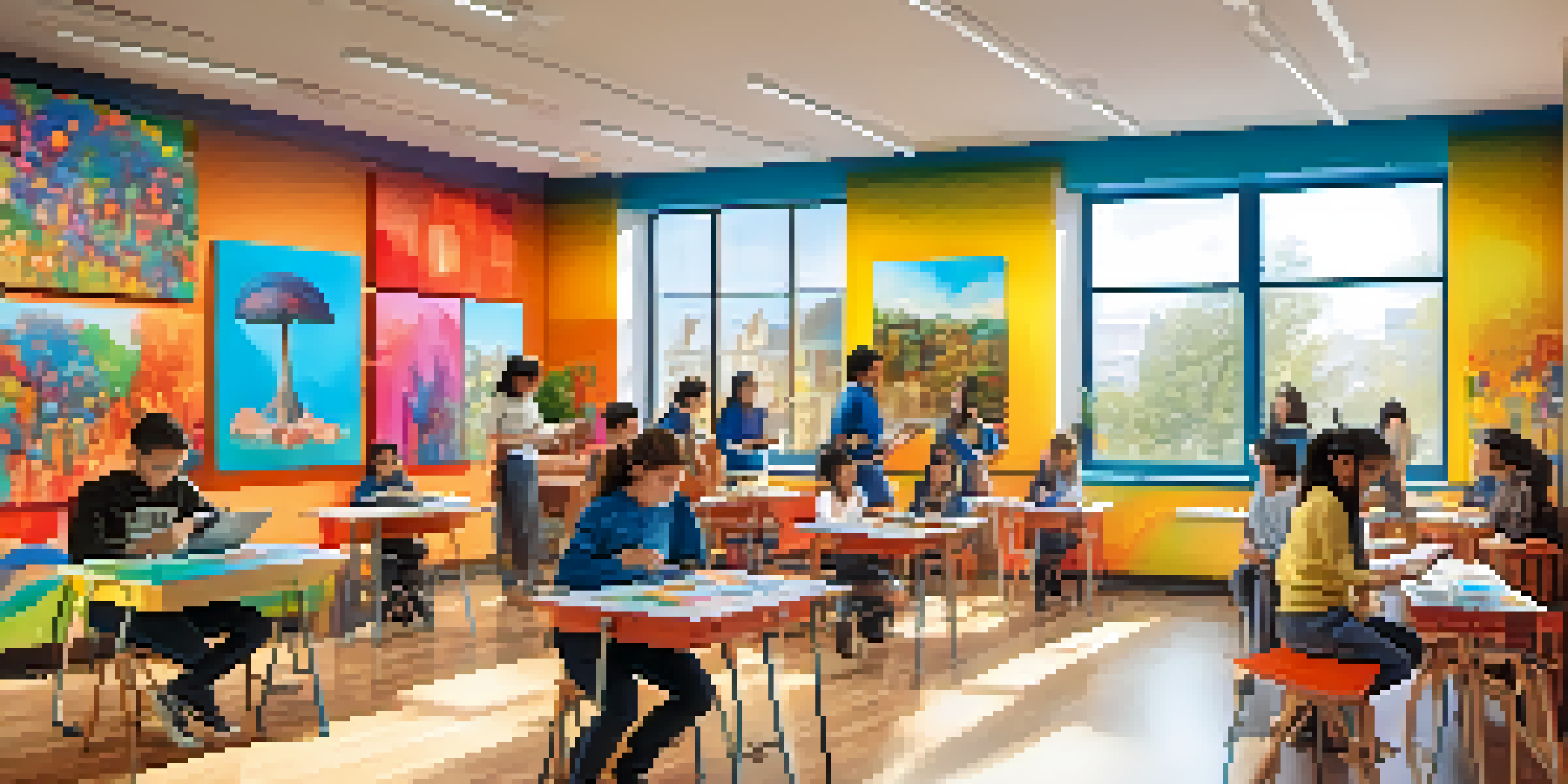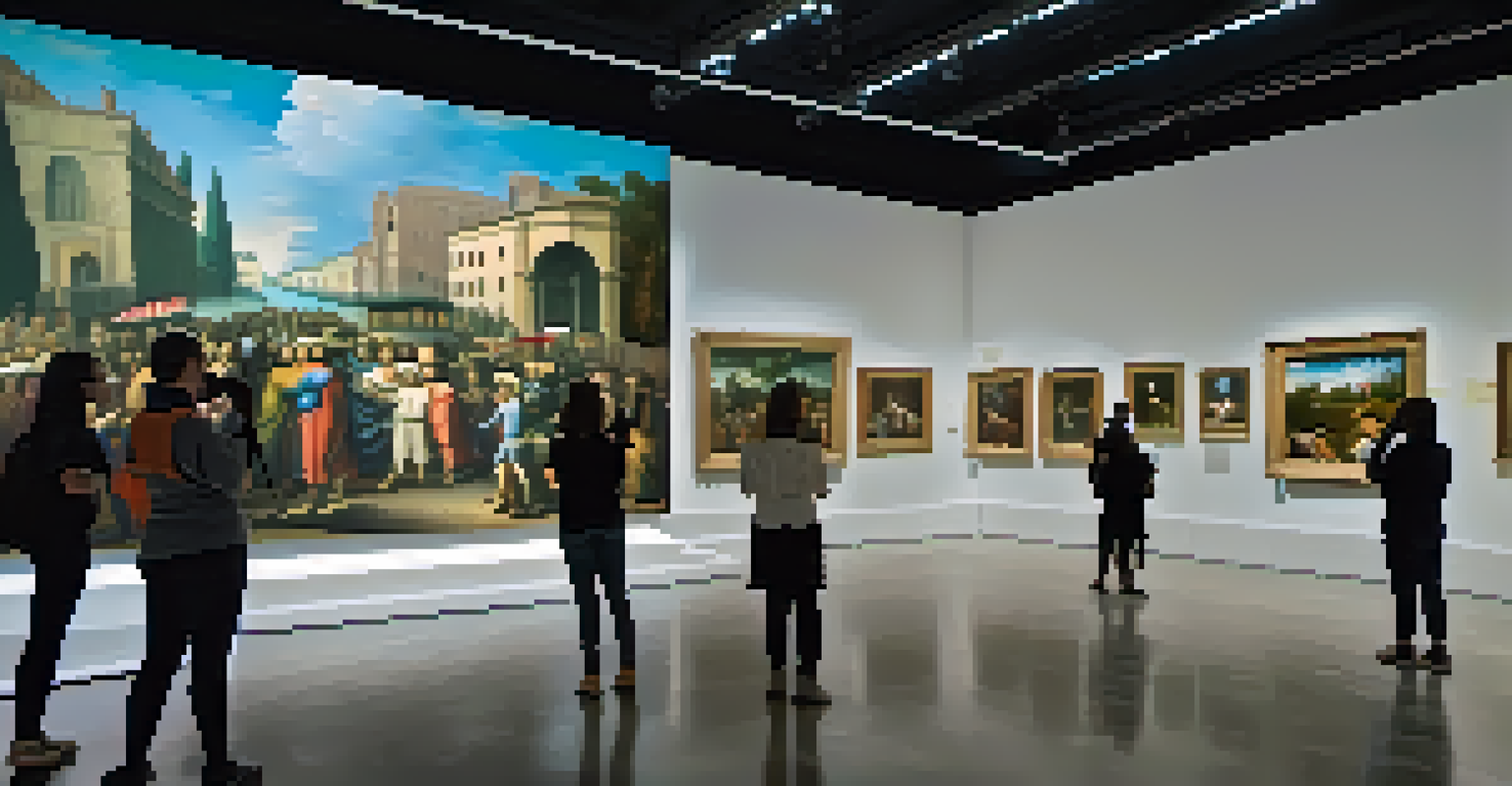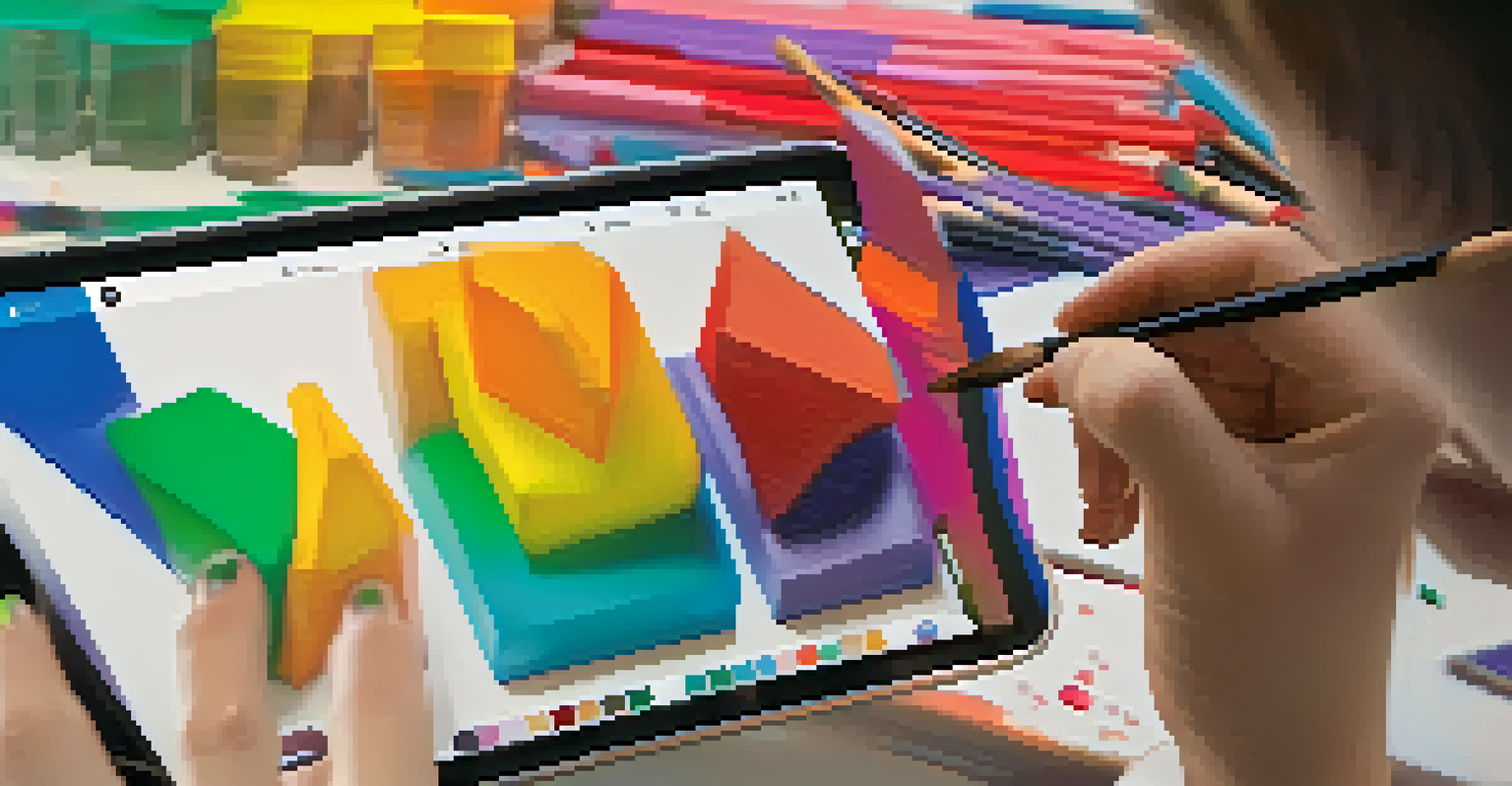Using AR to Enhance Visual Arts Education and Student Expression

What is Augmented Reality in Education?
Augmented Reality (AR) is a technology that overlays digital information onto the real world. Imagine looking through your smartphone and seeing a painting come to life with interactive elements. This blend of physical and digital worlds enhances the learning experience, making it more immersive and engaging.
Technology is best when it brings people together.
In the context of visual arts education, AR can transform how students create and interact with art. Instead of simply viewing a piece of artwork, they can explore its layers, colors, and textures in a dynamic way. This not only deepens their understanding but also sparks their creativity.
By integrating AR into the classroom, educators can provide students with unique opportunities to express themselves. It allows for more personalized and interactive learning experiences, which can be especially beneficial in the arts where visual representation is key.
Benefits of AR in Visual Arts Education
One of the main benefits of using AR in visual arts education is enhanced engagement. Students often find traditional methods less stimulating, but AR can capture their attention with its interactive features. This engagement can lead to improved focus and a greater willingness to explore complex artistic concepts.

Moreover, AR fosters collaboration among students. With tools that allow for group projects, students can share their AR creations and receive real-time feedback. This collaborative spirit not only enhances learning but also builds valuable communication skills that are essential in any field.
AR Enhances Engagement in Art Learning
Augmented Reality captures students' attention and fosters deeper exploration of artistic concepts.
Additionally, AR can cater to various learning styles. Visual learners benefit from the rich imagery, while kinesthetic learners can engage with the tactile elements of AR art projects. This inclusive approach ensures that all students have the opportunity to thrive in their artistic endeavors.
Using AR to Teach Art History
AR can breathe new life into art history lessons by allowing students to interact with historical artworks. Instead of reading about a famous painting, they can view it in 3D or even step inside the context of its creation. This immersive experience can make history feel more relevant and exciting.
The future belongs to those who believe in the beauty of their dreams.
For example, students can explore the techniques used by renowned artists like Van Gogh or Picasso through AR simulations. They can attempt to replicate these techniques in their own work, gaining a deeper understanding of the artistic process. This hands-on approach makes learning more impactful and memorable.
Furthermore, AR can present historical context that traditional textbooks cannot, such as the socio-political environment during the time a piece was created. By visualizing these elements, students can better appreciate the artwork and its significance.
Enhancing Creative Expression with AR Tools
AR tools allow students to unleash their creative potential in unprecedented ways. With applications that let them manipulate colors, textures, and shapes in real-time, students can experiment without the fear of making mistakes. This freedom encourages risk-taking, a vital component of the artistic process.
For instance, imagine a student using an AR app to draw in 3D space, bringing their imagination to life in a way that’s simply not possible with traditional mediums. This ability to visualize and create in three dimensions can inspire new ideas and artistic directions.
AR Transforms Art History Lessons
With AR, students can interact with historical artworks, making art history more immersive and relevant.
Moreover, AR can help students visualize their artistic choices in a virtual environment before committing to them in real life. This allows for thoughtful decision-making and encourages a more exploratory approach to art.
Integrating AR into the Curriculum
Integrating AR into visual arts education requires careful planning and consideration. Educators must identify the specific learning objectives they want to achieve and choose AR tools that align with these goals. This thoughtful integration ensures that AR enhances, rather than distracts from, the learning experience.
Moreover, training teachers on how to effectively use AR technology is crucial. Professional development sessions can equip educators with the skills to incorporate AR into their lessons confidently. When teachers are comfortable using technology, students are more likely to benefit from its full potential.
Additionally, collaboration with tech experts can provide insights into the latest AR applications and how to best utilize them in a classroom setting. This partnership can lead to innovative lesson plans that captivate students and enrich their learning.
Challenges of Implementing AR in Art Education
While AR offers many benefits, there are challenges to implementing it in visual arts education. One of the primary obstacles is access to technology; not all schools have the necessary devices or software to utilize AR effectively. This disparity can create an uneven playing field for students.
Furthermore, there’s a learning curve associated with AR technology for both students and teachers. Some may find it difficult to adapt to new tools, which can hinder the overall learning experience. Providing adequate support and resources can help ease this transition.
Future of AR in Art Education
The evolving AR technology promises innovative applications and greater accessibility, reshaping art education for future generations.
Lastly, it's essential to ensure that AR is used as a supplement to traditional teaching methods rather than a replacement. Balancing technology with hands-on experiences ensures that students receive a well-rounded education in the arts.
Future of AR in Visual Arts Education
The future of AR in visual arts education is promising and full of potential. As technology continues to evolve, we can expect even more innovative applications that enhance the learning experience. Imagine virtual galleries where students can exhibit their work alongside famous artists, bridging the gap between learning and real-world art exposure.
Moreover, advancements in AR technology will likely make it more accessible for schools to implement. As devices become more affordable and user-friendly, more educators will be able to take advantage of AR’s capabilities. This accessibility can lead to a broader impact on art education as a whole.

Ultimately, the integration of AR in visual arts education could redefine how we teach and learn about art. By embracing this technology, we can inspire a new generation of artists who are not only skilled but also innovative thinkers.